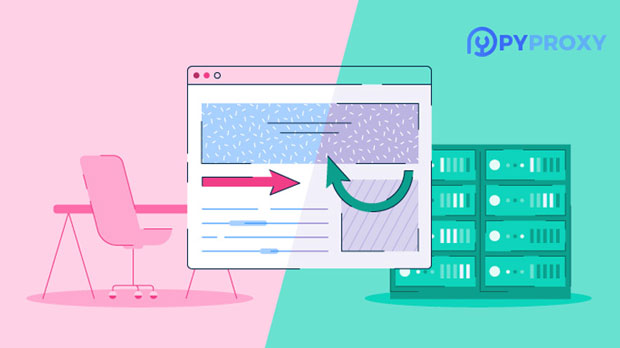What is the price difference between a high bandwidth SOCKS5 proxy and a regular proxy?
When evaluating proxies, one of the most significant factors to consider is the cost. The price disparity between high-bandwidth socks5 proxies and regular proxies can be substantial, depending on the specific use case, provider, and overall performance requirements. High-bandwidth SOCKS5 proxies tend to be more expensive than regular proxies due to their advanced capabilities, increased speed, and reliability. Understanding the reasons behind this price difference and how it impacts the value provided to customers can help users make more informed decisions when selecting proxies. This article will explore the key factors contributing to the price difference between high-bandwidth SOCKS5 proxies and regular proxies. Understanding Proxy TypesBefore diving into the price difference, it is essential to understand what constitutes high-bandwidth SOCKS5 proxies and regular proxies. Proxies are essentially intermediaries between a user's device and the internet, allowing them to mask their real IP address for various purposes such as security, privacy, or bypassing geo-restrictions.1. Regular Proxies Regular proxies are often basic, low-cost options that may offer limited bandwidth and speed. These proxies can be classified into several types, such as HTTP, HTTPS, and SOCKS4 proxies. They typically serve the purpose of general web browsing, accessing blocked content, or scraping data. While they can be sufficient for lighter tasks, they may struggle to handle high volumes of traffic, which can lead to slower speeds and potential disruptions.2. High-Bandwidth SOCKS5 Proxies SOCKS5 proxies, on the other hand, are more advanced than their HTTP or HTTPS counterparts. The SOCKS5 protocol is versatile, supporting a range of applications including web browsing, email services, and peer-to-peer file sharing. High-bandwidth SOCKS5 proxies are designed to handle large amounts of data without compromising on speed or performance. They provide a stable connection, often with faster speeds and more reliable uptime, making them ideal for activities that require significant bandwidth, such as video streaming, online gaming, or large-scale data scraping.Factors Contributing to Price DifferencesSeveral factors contribute to the price difference between high-bandwidth SOCKS5 proxies and regular proxies. These factors include the technical capabilities of each proxy type, the level of service provided, and the demand for each type of proxy.1. Bandwidth and Speed High-bandwidth SOCKS5 proxies are specifically designed to handle large amounts of data traffic efficiently. This capability requires more advanced infrastructure, such as higher-end servers, faster network connections, and greater overall capacity. The increased bandwidth translates to more stable and faster connections, especially when handling high-demand activities like streaming or large-scale data transfers. As a result, users seeking these benefits are willing to pay more for the enhanced performance, which drives up the price of high-bandwidth SOCKS5 proxies.Regular proxies, by contrast, are typically designed for more basic use cases, where speed and bandwidth are not as critical. These proxies often come with lower bandwidth limits and may experience slower speeds, especially during peak usage times. The reduced infrastructure requirements result in lower costs for regular proxies.2. Reliability and Uptime The reliability of a proxy is crucial for maintaining a consistent connection. High-bandwidth SOCKS5 proxies are usually more reliable, offering higher uptime percentages due to their robust infrastructure and optimized network paths. These proxies are less likely to experience downtime or connection drops, which can be a significant problem for users engaged in time-sensitive activities like online gaming, live streaming, or business operations.Regular proxies, however, are generally less reliable, as they may not have the same level of redundancy or failover mechanisms. Their uptime may vary, and users may experience slower response times or even service interruptions, which makes them less suited for critical applications.3. Security and Privacy Features High-bandwidth SOCKS5 proxies often come with enhanced security features, such as encryption support and better anonymity protection. SOCKS5 proxies are also known for their ability to support UDP (User Datagram Protocol), which is important for real-time applications like gaming and video conferencing. The added security and privacy features demand more resources from the proxy provider, which adds to the cost of high-bandwidth SOCKS5 proxies.In contrast, regular proxies may not offer the same level of security or encryption, and they may be more prone to leaks or vulnerabilities. For users who prioritize security, high-bandwidth SOCKS5 proxies justify their higher price due to the additional layers of protection they offer.4. Market Demand and Use Cases The demand for high-bandwidth SOCKS5 proxies is generally higher for specific use cases, such as large-scale data scraping, bypassing geo-restrictions for high-definition streaming, or supporting corporate VPN services. These use cases require fast and stable proxies that can handle large amounts of data with minimal lag. The increased demand for these specialized proxies contributes to their higher price.Regular proxies, on the other hand, are often used for less demanding tasks such as general browsing or accessing localized content. The lower demand for these basic proxies allows providers to offer them at a more affordable price point.Cost vs. Value: What You Are Paying ForThe decision to purchase high-bandwidth SOCKS5 proxies versus regular proxies ultimately comes down to the balance of cost and value. Users must assess their specific needs and determine whether the additional performance, reliability, and security offered by high-bandwidth SOCKS5 proxies justify the higher price.1. Use Case Consideration If the proxy is being used for casual browsing or accessing basic web content, regular proxies may be sufficient and more cost-effective. However, if the task requires high-speed performance, data-heavy operations, or a higher level of security, investing in high-bandwidth SOCKS5 proxies can provide significant advantages in terms of speed, reliability, and overall user experience.2. Long-Term Savings While high-bandwidth SOCKS5 proxies come at a higher upfront cost, their superior performance and reliability can result in long-term savings. Reduced downtime, faster speeds, and enhanced security can translate into fewer disruptions and greater efficiency, which can be particularly valuable for businesses or users relying on proxies for critical operations.3. Scalability and Flexibility High-bandwidth SOCKS5 proxies often come with greater scalability and flexibility, allowing users to adapt to changing needs over time. Whether it's handling more traffic, expanding to new regions, or accessing different types of content, the superior capabilities of high-bandwidth SOCKS5 proxies ensure that users can scale their proxy usage without encountering performance bottlenecks.Conclusion: Which Proxy Is Right for You?In conclusion, the price difference between high-bandwidth SOCKS5 proxies and regular proxies is driven by several factors, including the level of performance, reliability, security, and infrastructure required for each type. High-bandwidth SOCKS5 proxies come at a premium, but they offer significant advantages for users with demanding needs such as fast speeds, large-scale data handling, and enhanced security.For users with basic needs, regular proxies may provide a more cost-effective solution without compromising on functionality. However, for those who require high performance and reliability, the investment in high-bandwidth SOCKS5 proxies can provide a substantial return in terms of better user experience and more efficient operations.Ultimately, understanding the price-to-performance ratio and evaluating your specific requirements will help guide your decision, ensuring that you choose the right proxy solution for your needs.
2025-01-09

























































